- Administrator
- Albums and Singles
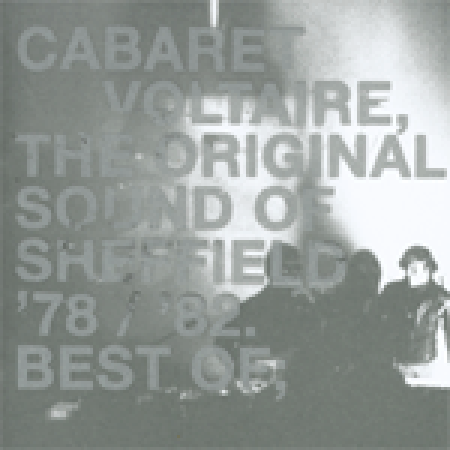 I know what you're thinking, "Didn't EMI already release The Original Sound of Sheffield last year?" Yes, they did, and, in fact, their Cabaret Voltaire collections (including the 'Conform to Deform' box and 'Remixed' CD) contained a plethora of material previously unavailable on compact disc. This collection, despite the subject being dear and close to my heart, contains no music previously (or currently) unavailable. The timespan focuses in on the most essential songs from the pre-Some Bizzare/Virgin days when the Cabs were still a three-piece. To Mute's credit, this serves as a great documentary of how they evolved, chronologically, from their tape-noise punk days (with classic single tracks like "Nag Nag Nag" and popular album favorites like "No Escape" through the more structured beat material (with the timeless "Yashar" which still gives me chills) which led up to the Virgin trilogy.
I know what you're thinking, "Didn't EMI already release The Original Sound of Sheffield last year?" Yes, they did, and, in fact, their Cabaret Voltaire collections (including the 'Conform to Deform' box and 'Remixed' CD) contained a plethora of material previously unavailable on compact disc. This collection, despite the subject being dear and close to my heart, contains no music previously (or currently) unavailable. The timespan focuses in on the most essential songs from the pre-Some Bizzare/Virgin days when the Cabs were still a three-piece. To Mute's credit, this serves as a great documentary of how they evolved, chronologically, from their tape-noise punk days (with classic single tracks like "Nag Nag Nag" and popular album favorites like "No Escape" through the more structured beat material (with the timeless "Yashar" which still gives me chills) which led up to the Virgin trilogy.
 
I would even go as far to say that this would most certainly match a mix-tape of Cabs that I would make for a friend if I wanted them to hear the most important tracks in this period of their career. Completists and fans might appreciate the thick booklet, newly unearthed photos, and a brief interview with Richard H. Kirk contained herein, but the grey text on black-and-white print is exceptionally annoying. Sometimes I wonder if compilations like this are just a vehicle for record companies to employ Designers Republic. As much as I love the music, I can't recommend this in good conscience. Had this been a budget release, I might have a different take, but for people who are interested in good introductions to this period of Cabaret Voltaire music, 'The Living Legends' collects nearly all of the Rough Trade singles and odds-n-ends from this time and compliments the albums without overlap. Now that EMI owns both Virgin and Mute, it would be nice if there was a collection that gathered all their 7" single release versions from inception through the end, possibly even coupled with a DVD to include all their videos too. As it is now, however, the market is completely oversaturated with Cabaret Voltaire compilations and music snobs insisting it's all good for you.
 
samples:
 
Read More
- Administrator
- Albums and Singles
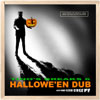 Just when I was about to abandon all hope of possessing a dub record to play while kids in Jar-Jar Binks outfits come knocking on my door this materializes!
Just when I was about to abandon all hope of possessing a dub record to play while kids in Jar-Jar Binks outfits come knocking on my door this materializes!
In actuality, however, this is not an illogical step in the evolution of Tino, as, well, when you look through sound effects records of the 1960s, horror sounds seem to have been a big trend, forgotten faster than you can say 'Dear Dead Delilah.' In addition, must we remind you that "Tino is, like, Mr. Halloween," according to Rayanne from the TV series, 'My So Called Life' (episode 9). Obscure references aside, Tino has expectingly grabbed a number of obscure sound effects, music, film and TV samples, gently mixed with fiendish Rastafarian samples and served on a sturdy dub plate, and the result is as tasty as fine pumpkin pie. Guest appearances include Wolfman, the Loch Ness Monster, zombies, and numerous unnamed ghouls. Quick, cue the theremin for the ghost appearance as the lady screams and the rhythms roll on. It's just that fun. In the end, much like the other Tino records, a number of samples are provided for your own personal use. Of course, this time it's a little scarier,... Muhahahahahahahahaha.
 
samples:
 
Read More
- Joshua David Mann
- Albums and Singles
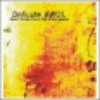 The south London sextet Delicate AWOL has other projects besides their recently released 'Heart Drops From the Great Space.' They run a label called Day Release Records and they play in the band Rothko, sometimes referred to as their "alter ego." On 'Heart Drops From The Great Space,' Delicate AWOL craft a baroque arrangement of jazz, post-rock, and classical, perhaps plucking unique pieces from the spheres of their other projects outside the band. The layers throughout the album are largely twofold, though: jazz and rock. Third and fourth minor layers are the chamber-pop strings and the electronic glitches which pop up in some songs. But every now and then, all of these layers evaporate along with their relevant instruments and leave bare the skeletal side of the band, which is often more honest and true and delicate than the rest. On "That Terminal's Down," the bass guitar, drums, and horn-tooting eventually give way to simply shimmery chimes and Caroline Ross's vocals, and it sounds lovely. These sparer parts on the album are unfortunately infrequent, but when they do arrive, they do so stylishly and with panache. Throughout the record, the jazz layer of Delicate AWOL is slightly abrasive, largely because the horns suggest that this album should be labeled as a lounge rock album. But I think there is more going on here than just background music to Scotch and cigarettes. It peaks out from behind the velvet curtain occasionally, when it hears the horns subdued, the strings muted, and the rhythms dissipated. Appreciation of Delicate AWOL is developed through these built-in contrasts, though this renders some of 'Heart Drops From The Great Space' much more listenable than the rest.
The south London sextet Delicate AWOL has other projects besides their recently released 'Heart Drops From the Great Space.' They run a label called Day Release Records and they play in the band Rothko, sometimes referred to as their "alter ego." On 'Heart Drops From The Great Space,' Delicate AWOL craft a baroque arrangement of jazz, post-rock, and classical, perhaps plucking unique pieces from the spheres of their other projects outside the band. The layers throughout the album are largely twofold, though: jazz and rock. Third and fourth minor layers are the chamber-pop strings and the electronic glitches which pop up in some songs. But every now and then, all of these layers evaporate along with their relevant instruments and leave bare the skeletal side of the band, which is often more honest and true and delicate than the rest. On "That Terminal's Down," the bass guitar, drums, and horn-tooting eventually give way to simply shimmery chimes and Caroline Ross's vocals, and it sounds lovely. These sparer parts on the album are unfortunately infrequent, but when they do arrive, they do so stylishly and with panache. Throughout the record, the jazz layer of Delicate AWOL is slightly abrasive, largely because the horns suggest that this album should be labeled as a lounge rock album. But I think there is more going on here than just background music to Scotch and cigarettes. It peaks out from behind the velvet curtain occasionally, when it hears the horns subdued, the strings muted, and the rhythms dissipated. Appreciation of Delicate AWOL is developed through these built-in contrasts, though this renders some of 'Heart Drops From The Great Space' much more listenable than the rest.
samples:
Read More
- Administrator
- Albums and Singles
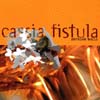 All the noises and frequencies on this record have been produced using self-constructed equipment, resulting in a sound not very far away from early analog synthesizer experiments or a tone generators humming. These home made drones are divided into three parts, add up to a total of 46 minutes, and are nicely packed in a miniature album-like gatefold sleeve. Two of the three parts were mixed, edited and mastered with fellow Australian Oren Ambarchi (and Section Two with Scott Horscroft). Without this name dropping, however, I doubt this disc would have been released. There are no warmly welcomed richly layered textures or multi-level sound structures, instead, the result is, on numerous levels minimal (minimal in conception and minimal in effect). The balance between disturbing and hypnotizing sounds is so well-kept that it lacks a certain excitement besides the hidden gimmick—a subliminal overdrive when the speakers start to crackle as the mastering job pushes the CD output level in the red zone of the LED display. Somehow this release leaves me slightly puzzled with an isolated feel. From the start to the end, Walls musically guides us through the middle of nowhere without any clue or destination. I like my music to be a bit more expressive or excessive but for more settled minds this might be a welcome refreshment in noisy drone ambience.
All the noises and frequencies on this record have been produced using self-constructed equipment, resulting in a sound not very far away from early analog synthesizer experiments or a tone generators humming. These home made drones are divided into three parts, add up to a total of 46 minutes, and are nicely packed in a miniature album-like gatefold sleeve. Two of the three parts were mixed, edited and mastered with fellow Australian Oren Ambarchi (and Section Two with Scott Horscroft). Without this name dropping, however, I doubt this disc would have been released. There are no warmly welcomed richly layered textures or multi-level sound structures, instead, the result is, on numerous levels minimal (minimal in conception and minimal in effect). The balance between disturbing and hypnotizing sounds is so well-kept that it lacks a certain excitement besides the hidden gimmick—a subliminal overdrive when the speakers start to crackle as the mastering job pushes the CD output level in the red zone of the LED display. Somehow this release leaves me slightly puzzled with an isolated feel. From the start to the end, Walls musically guides us through the middle of nowhere without any clue or destination. I like my music to be a bit more expressive or excessive but for more settled minds this might be a welcome refreshment in noisy drone ambience.
samples:
Read More
- Administrator
- Albums and Singles
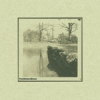 The chimes, clicks, and percussive beats heard on The Mobius Band's 'Three' EP are an old chestnut. We have heard them before. Perhaps not in this setting, not in this wood. But we know them, just as you know the guy who seems to show up at every show you attend. The Mobius Band surround their slyly standard indie rock songs with a swirl of electronics. The tactic is more successful in some songs than others. Most noticeably, the instrumental songs on "Three" have a hard time distinguishing themselves because the synth effects and the beat processors which The Mobius Band use are nothing new, and nothing novel is done with them. The more successful songs, like "Arrow," have at their core simply a strong rock song, regardless of the electronics dancing around them. And that is what the electronics really amount to: sonic flourishes on top of rock songs, dressing on salad. The electronic instrumentation feels superfluous, though in a live setting it admittedly could add color to improvisational parts. On record, it ends up tasting rather like a stale Tortoise song, which is already likely covered with bacterium. When The Mobius Band fire up a long instrumental track, I tend to forget about them. When the Mobius Band sing, I am more apt to listen.
The chimes, clicks, and percussive beats heard on The Mobius Band's 'Three' EP are an old chestnut. We have heard them before. Perhaps not in this setting, not in this wood. But we know them, just as you know the guy who seems to show up at every show you attend. The Mobius Band surround their slyly standard indie rock songs with a swirl of electronics. The tactic is more successful in some songs than others. Most noticeably, the instrumental songs on "Three" have a hard time distinguishing themselves because the synth effects and the beat processors which The Mobius Band use are nothing new, and nothing novel is done with them. The more successful songs, like "Arrow," have at their core simply a strong rock song, regardless of the electronics dancing around them. And that is what the electronics really amount to: sonic flourishes on top of rock songs, dressing on salad. The electronic instrumentation feels superfluous, though in a live setting it admittedly could add color to improvisational parts. On record, it ends up tasting rather like a stale Tortoise song, which is already likely covered with bacterium. When The Mobius Band fire up a long instrumental track, I tend to forget about them. When the Mobius Band sing, I am more apt to listen.
samples:
Read More
- Administrator
- Albums and Singles
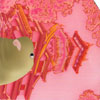 The first time I put on Merzbow's Venereology CD, I was prepared for "noise", but the instant that it started, I literally thought that my stereo had somehow exploded at the same time rendering the most abrasive and physically jarring sound ever to come out of my speakers. I thought I was prepared for "noise", but as it turned out, I had just been expecting "noisy". No friends, Merzbow is Noise, with a capital N even. So the prospect of Merzbeat, Merzbow's excursion into beat-oriented music is of course worth at least a casual listen. For a man who's mastered and then run into the ground the concept of solid noise as music, working with beats actually seems more experimental and exciting than taking on yet another palette of screeching feedback and squalor. And Merzbeat indeed sounds experimental. The first two songs never establish anything other than the sense that the artist is toying with the idea of running beats through distortion effects. Thanks, but this has been done, and if the beats here were in themselves compelling, Merzbow's take on them would likely be interesting, but for the first two long tracks, we are left with simple, repeating beats passed through various filters and eq settings until there is no longer any doubt that the experiment is no longer interesting to listen to, musically speaking. On the third track, the epic Shadow Barbarian (Long Mix), Merzbow finally hits his stride, taking what he's learned from the first two attempts and abandoning almost all of the rules that made them sound like second-rate DHR b-sides. At about ten minutes into Shadow Barbarian, the true Merzbow surfaces as the beats give way to rhythms made of near pure noise. The compositional schema of applying a cyclical, linear path of effects settings to a constant loop is still present, but now the tracks begin to survive on pure brutality alone. Synths and guitars round out the sounds that are inevitably drowned out by bloody wails, but all of that is gravy by the time Looping Jane (Beat Mix) kicks in to a voracious breakbeat that pummels through walls of feedback. When you think it isn't getting any louder, it gets louder. Tracks three through five are alone worth the price of admission if you are fan of beats or noise or both. Then, regrettably, we sit through 60 (count them) SIXTY, three second tracks of silence to get to the "hidden track" that is so graciously unhidden for us by the liner notes. Burried on track 66 is the most curious anomaly of the record: a remix by renouned beat-master Jack Dangers, on a record called Merzbeat, that is beatless! It's such a letdown that the trademark Dangers' beat work didn't mix it up with the signature Merzbow noise that I can't even describe this song other than to say every time I have tried to listen to it, I have scanned through it waiting for a beat to come in. Let's pray there's a remix.
The first time I put on Merzbow's Venereology CD, I was prepared for "noise", but the instant that it started, I literally thought that my stereo had somehow exploded at the same time rendering the most abrasive and physically jarring sound ever to come out of my speakers. I thought I was prepared for "noise", but as it turned out, I had just been expecting "noisy". No friends, Merzbow is Noise, with a capital N even. So the prospect of Merzbeat, Merzbow's excursion into beat-oriented music is of course worth at least a casual listen. For a man who's mastered and then run into the ground the concept of solid noise as music, working with beats actually seems more experimental and exciting than taking on yet another palette of screeching feedback and squalor. And Merzbeat indeed sounds experimental. The first two songs never establish anything other than the sense that the artist is toying with the idea of running beats through distortion effects. Thanks, but this has been done, and if the beats here were in themselves compelling, Merzbow's take on them would likely be interesting, but for the first two long tracks, we are left with simple, repeating beats passed through various filters and eq settings until there is no longer any doubt that the experiment is no longer interesting to listen to, musically speaking. On the third track, the epic Shadow Barbarian (Long Mix), Merzbow finally hits his stride, taking what he's learned from the first two attempts and abandoning almost all of the rules that made them sound like second-rate DHR b-sides. At about ten minutes into Shadow Barbarian, the true Merzbow surfaces as the beats give way to rhythms made of near pure noise. The compositional schema of applying a cyclical, linear path of effects settings to a constant loop is still present, but now the tracks begin to survive on pure brutality alone. Synths and guitars round out the sounds that are inevitably drowned out by bloody wails, but all of that is gravy by the time Looping Jane (Beat Mix) kicks in to a voracious breakbeat that pummels through walls of feedback. When you think it isn't getting any louder, it gets louder. Tracks three through five are alone worth the price of admission if you are fan of beats or noise or both. Then, regrettably, we sit through 60 (count them) SIXTY, three second tracks of silence to get to the "hidden track" that is so graciously unhidden for us by the liner notes. Burried on track 66 is the most curious anomaly of the record: a remix by renouned beat-master Jack Dangers, on a record called Merzbeat, that is beatless! It's such a letdown that the trademark Dangers' beat work didn't mix it up with the signature Merzbow noise that I can't even describe this song other than to say every time I have tried to listen to it, I have scanned through it waiting for a beat to come in. Let's pray there's a remix.Read More
- Administrator
- Albums and Singles
 Twine's latest release should prove to those still skeptical that electronic music need not be so self-referential. A fair number of releases by Twine's various contemporaries focus the lens inward so much that the technique of making music becomes the message the music conveys. Worshipping the glitch and abusing the ones and zeros are certainly useful modes within which many artists have produced stellar works. Thankfully though, Twine leave the acoustic mirror at home and choose to focus more on using electronic means to covey something else entirely. Sure, Recorder has more than its fair share of clicky rhythms, shuffling distortion, and production trickery that moves drones and digital blips around in space like a blender, but what it also has is soul. The opening track, None Some Silver frames an acoustic guitar passage with just enough buzz and synthetic blur that you know this isn't Mississippi Delta music, but it doesn't lose the feeling of a creaky rocking chair on a southern porch. Twine uses subtle shifts in the background of tracks to move them forward and the ambience is melancholy, but not overbearing. Simple rhythmic patterns that usually stop just short of being beats roll through some of the tracks, while others like Player Piano rely more on oddly filtered samples and that signature sample pop of intentionally sloppy loop points to create a kind of rustic-electro feel. Resonant filters are used freely to taint the sounds, draw them out of their original source environments, and into the rusty landscape that Twine creates here. The album ends much like it began, as a drawn out organ melody drifts into space, with the sun fragments of stories surface and recede, and a looped bit of static serves as the night song of binary cicadas on a hot August evening.
Twine's latest release should prove to those still skeptical that electronic music need not be so self-referential. A fair number of releases by Twine's various contemporaries focus the lens inward so much that the technique of making music becomes the message the music conveys. Worshipping the glitch and abusing the ones and zeros are certainly useful modes within which many artists have produced stellar works. Thankfully though, Twine leave the acoustic mirror at home and choose to focus more on using electronic means to covey something else entirely. Sure, Recorder has more than its fair share of clicky rhythms, shuffling distortion, and production trickery that moves drones and digital blips around in space like a blender, but what it also has is soul. The opening track, None Some Silver frames an acoustic guitar passage with just enough buzz and synthetic blur that you know this isn't Mississippi Delta music, but it doesn't lose the feeling of a creaky rocking chair on a southern porch. Twine uses subtle shifts in the background of tracks to move them forward and the ambience is melancholy, but not overbearing. Simple rhythmic patterns that usually stop just short of being beats roll through some of the tracks, while others like Player Piano rely more on oddly filtered samples and that signature sample pop of intentionally sloppy loop points to create a kind of rustic-electro feel. Resonant filters are used freely to taint the sounds, draw them out of their original source environments, and into the rusty landscape that Twine creates here. The album ends much like it began, as a drawn out organ melody drifts into space, with the sun fragments of stories surface and recede, and a looped bit of static serves as the night song of binary cicadas on a hot August evening. Read More
- Administrator
- Albums and Singles
 Ms. John Soda, the moniker under which duo Micha Acher and Stephanie Boehm collaborate, will no doubt draw comparisons to both label mates Lali Puna and the other musical project of Acher, The Notwist. Their debut album, however, has a sound which distinguishes itself from both the Notwist and Lali Puna for its energetic pop-sensibilities over the loose jazz and clinical electronics of each, respectively.
Ms. John Soda, the moniker under which duo Micha Acher and Stephanie Boehm collaborate, will no doubt draw comparisons to both label mates Lali Puna and the other musical project of Acher, The Notwist. Their debut album, however, has a sound which distinguishes itself from both the Notwist and Lali Puna for its energetic pop-sensibilities over the loose jazz and clinical electronics of each, respectively.
Boehm (also known for her work as keyboardist for the band Couch) has a voice that is simple and honest, and does not compete, but compliments Acher's adept handling of a vast array of instruments. (It's worth noting Acher also plays piano, bass and various brass instruments in the Tied and Tickled Trio.) Ms John Soda are assisted on the release by an external drummer, flautist, and percussionist.
The most captivating of the album's tracks is without a doubt "Go Check," which is also among the most outstanding songs of the year (even if the lyrics are somewhat incomprehensible!). It's a psychedelic go-go pop masterpiece with tambourine and organ sounds that would make even Piero Umiliani [see trashy 1970s Italian film scores] proud. The retro indulgence on this track is an anomaly, however. "Solid Groud", which immediately follows, is a contagiously pretty ballad comprised of blips, piano and plucked violin sounds. Other songs such as "By Twos" are warm and dark with exotic touches of percussion while tunes like "Unsleeping" are jangly pop numbers.
The overall composition of the album is remarkable and, thanks to a group of agile and gifted musicians, results in an exceptionally listenable record. 'No P. or D.' ranks with the best of the Morr Music releases, and as the year draws to an end, I can now safely say this one will certainly make my top ten list.
samples:
Read More
- Administrator
- Albums and Singles
 Acid Mothers Temple's "Electric Heavyland" is the kind of record that makes me want to adopt all kinds of unnecessary, Lester Bangs-style rock critic hyperbole. I want to compare Kawabata Mokoto to a shaman, summoning up spirits with his giant stone slabs of high magickal noise and grandiose riffs. I want to compare this album to some obscure circa-70's krautrock chestnut. I want to write in ALL CAPS AND END EVERY SENTENCE WITH THREE EXCLAMATION POINTS!!! Although I kind of detest this style of critique, I'm not sure how else to approach this excellent new disc by Acid Mothers Temple and the Melting Paraiso UFO. So, here goes:
Acid Mothers Temple's "Electric Heavyland" is the kind of record that makes me want to adopt all kinds of unnecessary, Lester Bangs-style rock critic hyperbole. I want to compare Kawabata Mokoto to a shaman, summoning up spirits with his giant stone slabs of high magickal noise and grandiose riffs. I want to compare this album to some obscure circa-70's krautrock chestnut. I want to write in ALL CAPS AND END EVERY SENTENCE WITH THREE EXCLAMATION POINTS!!! Although I kind of detest this style of critique, I'm not sure how else to approach this excellent new disc by Acid Mothers Temple and the Melting Paraiso UFO. So, here goes:Wham, bam, THANK YOU SATAN! Five minutes into the first ear-bleeding track we know just where we are. We have come to Metal Valhalla. A million retarded Vikings are pulling their lungs out through their mouths. A thousand nubile virgins dance too close to the bonfire, flames licking at their slick, lubricated flesh. This is a heady brew, a randy guitar and synthesizer fest that merges Blue Cheer with The Stooges and Amon Duul, and then feverishly jacks off and falls down in paroxysms of insane laughter. This is probably not what the druids played at Stonehenge, but they REALLY SHOULD HAVE!
Well, enough of that. This album won't save the world, but the three tracks contained herein certainly represent the best single document of the Acid Mothers Temple's more bombastic side. Kawabata has never sounded better, easily making the transition from solo guitar drones to wicked stoner metal riffs, to Slayer-inspired bouts of bludgeoning melodies. Never has it been more clear that this man is a master of his chosen instrument. Cotton Casino's falsetto shrieks and swirling, kaleidoscopic synthesizer squeals perfectly frame the noise. Propulsive, rumbling drums push the action forward into the abyss, keeping the listener on the edge of his seat. The riffs are so violent and direct as to be almost idiotic, but Kawabata still manages to convince you of the intelligence of his prowess. This is idiot savant metal, dude, and it never ceases to amaze and transcend.
samples:
Read More
- Administrator
- Albums and Singles
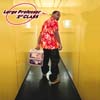 I'm willing to accept the fact that I have a favorable bias towards Queens-based rappers and producers, considering I grew up in Rego Park (right across the street from the infamous Lefrak City co-ops) and Forest Hills. However, I doubt that any true hip-hop heads would argue about the quality that has been coming out of this multicultural residential borough since the very beginning of the genre. Who better to represent QB than someone who's been in the game from Day One^?enter Large Professor.Matador
I'm willing to accept the fact that I have a favorable bias towards Queens-based rappers and producers, considering I grew up in Rego Park (right across the street from the infamous Lefrak City co-ops) and Forest Hills. However, I doubt that any true hip-hop heads would argue about the quality that has been coming out of this multicultural residential borough since the very beginning of the genre. Who better to represent QB than someone who's been in the game from Day One^?enter Large Professor.Matador
Having created beats for luminaries like Eric B. and Rakim, Slick Rick, and Gang Starr, as well as Queensbridge contemporaries Nas, Mobb Deep, and Cormega, the slept-on William Paul Mitchell deserves far more respect than he has received. Hopefully this will change when '1st Class,' his first album since Main Source's 1990 release 'Breakin Atoms,' drops. In an era where record labels assemble entire creative teams in order to complete rap albums, Large Professor delivers a true artist album here, rapping on and producing nearly every one of the tracks (save for the rugged "Akinyele" which spotlights the MC of the same name). Some of these songs have a decidedly old-school feel to them ("Kool", "Brand New"), while others could potentially fit on commercial rap radio playlists ("About That Time", "Ultimate"). The guest MCs here are among the lyrical elite, chosen more for their legendary ability than their commercial viability. On "In The Sun" the all-but-forgotten Q-Tip drops several conscious, black empowerment verses, slamming ignorant patriotism and reminding how the American Dream has bypassed blacks time and time again. "Stay Chisel" features long-time associate Nas (whose recent beef with Jay-Z has somewhat overshadowed his prior successes) flowing over a track that could have easily been an outtake from his 'Stillmatic' LP. So while Nelly and P. Diddy obsess over women like whiny pop primadonnas, Large Professor evokes the true essence of hip-hop on this future classic that demands repeat listening.
 
samples:
 
Read More
- Administrator
- Albums and Singles
 If you don't know why the Cabs became quite so big, then you probably haven't heard "Nag Nag Nag". Mute have another dodgy "Best Of" compilation coming out soon (which I'd heartily recommend to people who don't already own the Cabs' early output) and this single is meant to promote that. In the traditional method of record companies flogging dead horses, Mute have commissioned three or four new mixes of the track to complement the original (which also appears on the CD and first 12"). Firstly, Tiga and Zyntherius have a 'radio version' (on the CD) and 'full version' (on the second 12"). Mute say that Tiga "punks up" the vocals—I say he sounds like Stephen Tin Tin Duffy, and keep waiting for him to launch into the chorus of "Kiss Me". Mute say that this remix "bears all the hall-marks of an intense 'labour of love'"—I say it sounds like a crap cover version. Akufen contributes a far better mix (CD and second 12"). He appears to have had five good ideas for a mix and does about a minute-ish of each, and I'm not going to spoil it for you, but you'll end up grinning from ear to ear after hearing it. Finally Richard H. Kirk himself offers a true 21st century hardcore remix (CD and first 12") which is very much in the spirit of the original but in a thoroughly modern style. (I wanted to start dancing on the bus when listening to it again this morning.) Despite the crap Tiga and Zyntherius remixes, this has been a worthwhile project and I thoroughly recommend this release to anyone who reads The Brain.
If you don't know why the Cabs became quite so big, then you probably haven't heard "Nag Nag Nag". Mute have another dodgy "Best Of" compilation coming out soon (which I'd heartily recommend to people who don't already own the Cabs' early output) and this single is meant to promote that. In the traditional method of record companies flogging dead horses, Mute have commissioned three or four new mixes of the track to complement the original (which also appears on the CD and first 12"). Firstly, Tiga and Zyntherius have a 'radio version' (on the CD) and 'full version' (on the second 12"). Mute say that Tiga "punks up" the vocals—I say he sounds like Stephen Tin Tin Duffy, and keep waiting for him to launch into the chorus of "Kiss Me". Mute say that this remix "bears all the hall-marks of an intense 'labour of love'"—I say it sounds like a crap cover version. Akufen contributes a far better mix (CD and second 12"). He appears to have had five good ideas for a mix and does about a minute-ish of each, and I'm not going to spoil it for you, but you'll end up grinning from ear to ear after hearing it. Finally Richard H. Kirk himself offers a true 21st century hardcore remix (CD and first 12") which is very much in the spirit of the original but in a thoroughly modern style. (I wanted to start dancing on the bus when listening to it again this morning.) Despite the crap Tiga and Zyntherius remixes, this has been a worthwhile project and I thoroughly recommend this release to anyone who reads The Brain.
samples:
Read More

